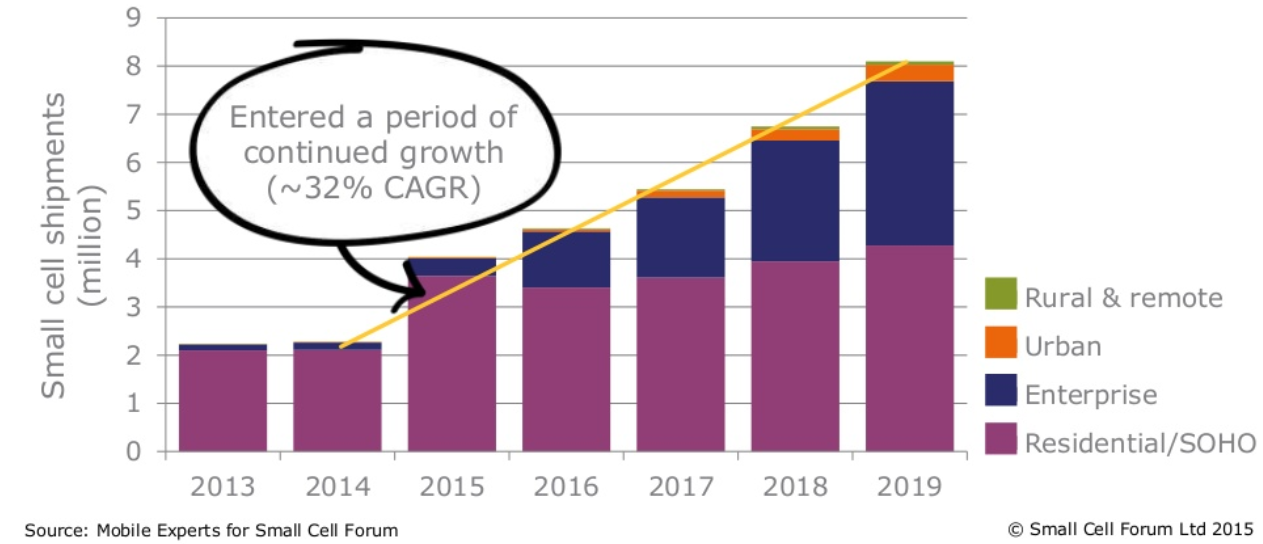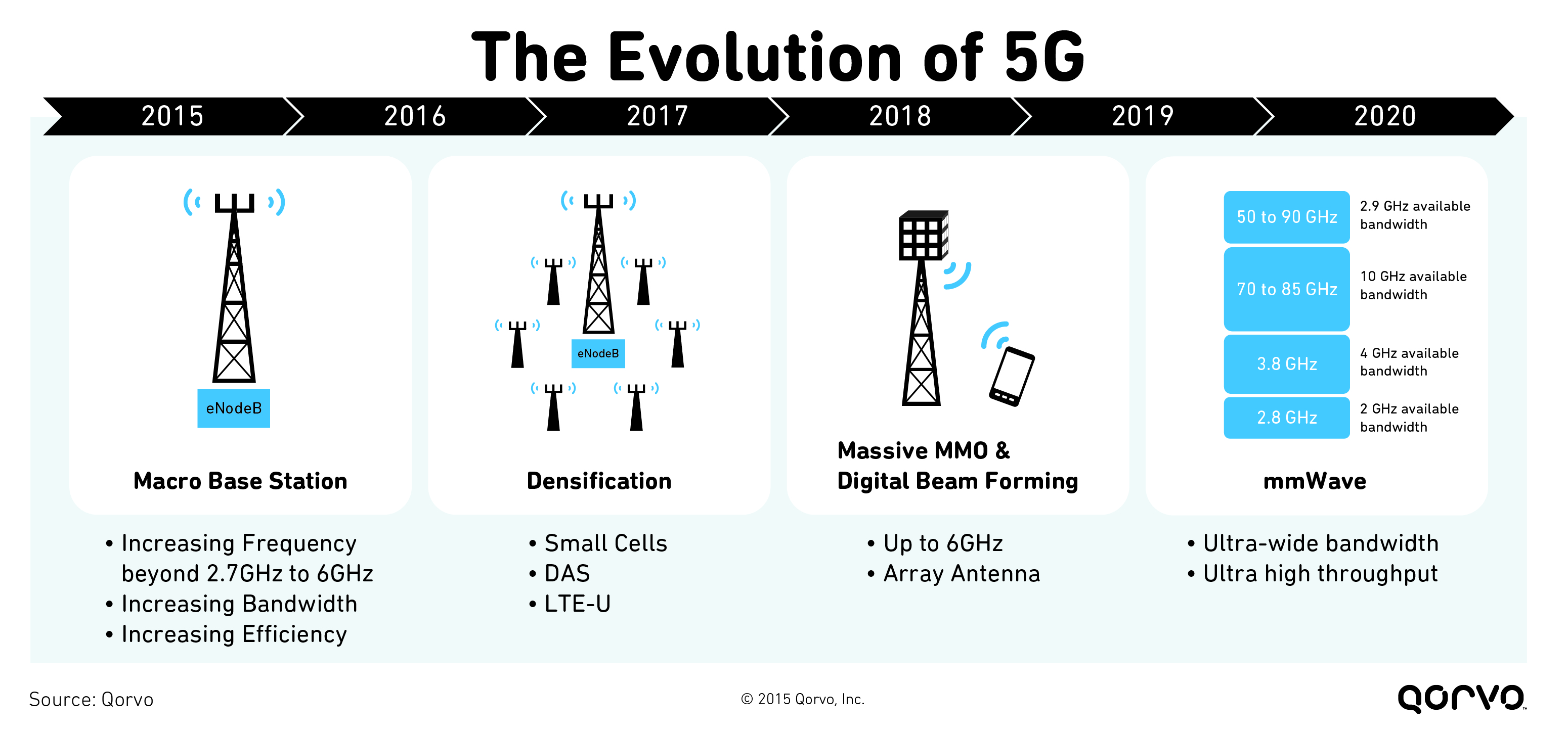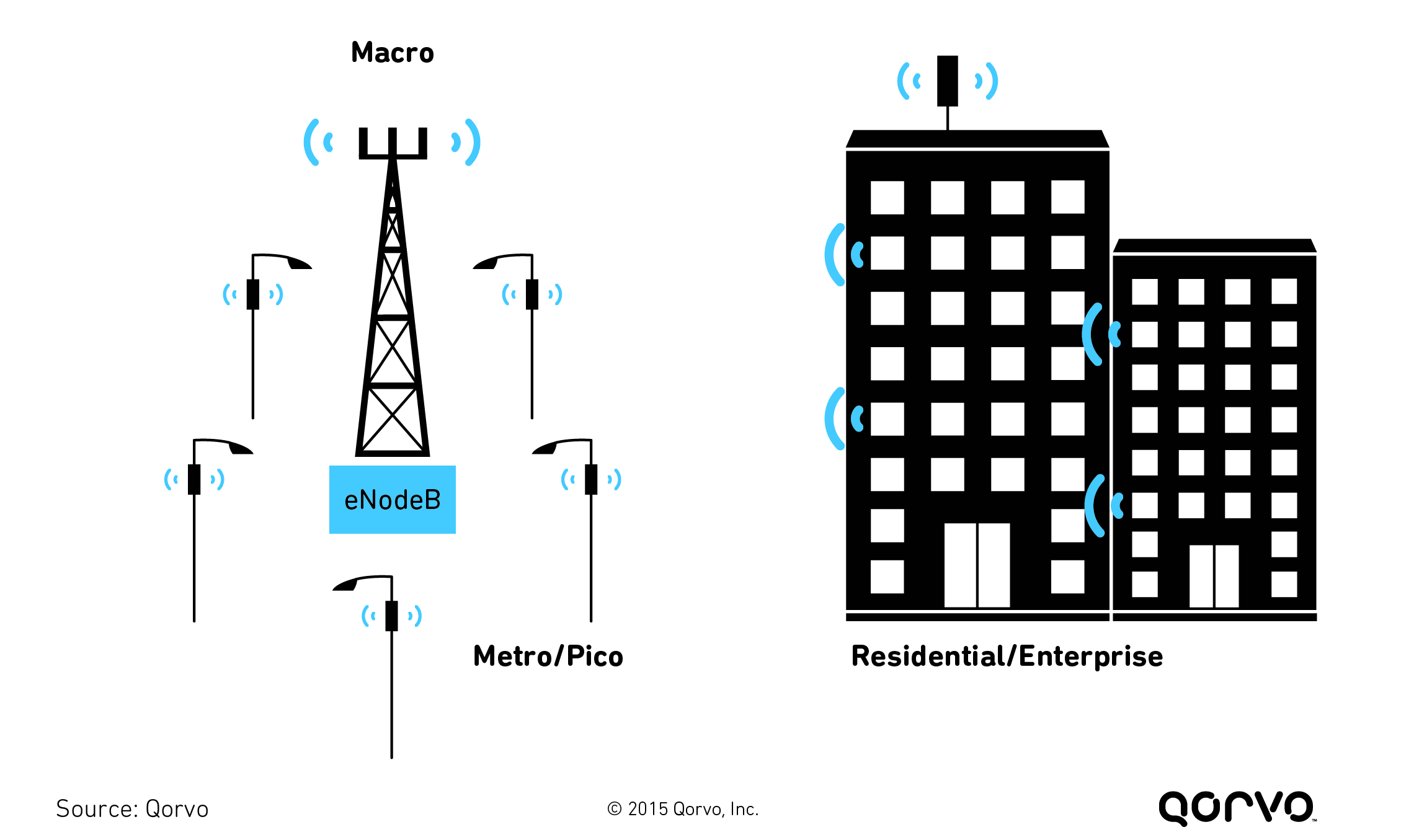The Buzz About Wireless Small Cells
By David Schnaufer, Qorvo

Every day, networks face coverage issues at busy locations such as airports, shopping malls, and sporting/concert venues. This type of network density, coupled with high user demand, is the leading contributor to small cell growth. Small cells function as mini-base stations, operating at a much lower radio power.
In fact, with emerging markets, such as the Internet of Things (IoT), Massive-MIMO, Vehicle to x, millimeter Wave (mmWave), and smart cities, small cell growth is beginning in every market category. The new fifth-generation (5G) wireless standard, targeted for completion in 2020, will add to this demand. The 5G standard will require aggressive network developments to increase bandwidth and system efficiency.
Small cell technology has been subject to continued enhancements since it was introduced by LTE release 9 in 2008. Projected to begin their climb to greater prominence in 2015, small cell shipments are estimated to reach more than eight million per year when 5G kicks off in 2019. Densification will bring about some unplanned ad-hoc deployments. Small cell design will require plug-and-play ability. Therefore, small cells could be operator or user installed, but will always be managed by carriers and tied into the macro-cell network. In busy and dense areas, such as city coffee shops, large cities, offices, and public venues, small cells will be critical to network coverage.

To address these new markets and increased network densification, adding more small cells would expand the existing macro-network — increasing capacity in areas with high user demand. As shown in the figure below, small cells are expected to roll out and provide densification in 2016, improving network performance and service quality, and offloading larger macro-cells. The result is a heterogeneous network with large macro-cells and small cells providing increased bit rates per area.

However, with densification comes interference and mobility handover challenges between small cells and the macro network, requiring careful network design and management. As a mobile device moves from the macro-cell environment to a small cell coverage area, instantaneous network switch profiles are required.
Also, although carrier challenges exist, mobile-device battery consumption benefits provide optimal user experience. The close proximity of a mobile user to a small cell base station allows for lower transmit power, substantially increasing battery life of a mobile device. Moreover, the mobile device’s proximity to the small cell creates clear call quality and efficient data uplink and downlink. Since small cells will be multi-standard — cellular, Wi-Fi, and eventually mmWave-based — mobile device users will benefit from increased data speeds and flexibility.

Small cells differ in their power level, geographical coverage, and the number of users serviced — as shown in the table below — but they also provide enhanced mobile broadband service in several ways, such as providing higher quality connections with higher bandwidth and lower latency. Small cells also provide coverage in areas poorly serviced by the macro cell due to distance, interference, or placement, extending the coverage area of the macro cell.

Future 5G densification networks will require cellular, Wi-Fi and mmWave abilities. Achieving the high expectations of 5G will require enhancements to existing filter, GaN, GaAs, and silicon technologies. RF designers must work with the needs of the future 5G network in mind — such as meeting wideband, high frequency, low latency, and highly dense network environment requirements. Small cells are just one of the ways to address network needs and create the connected mobile environment of the future.

TQP9218, High Linearity 0.25 Watt Band 3 Small Cell PA
http://www.triquint.com/products/p/TQP9218
TQP9418, High Linearity 0.5 Watt Band 3 Small Cell PA
http://www.triquint.com/products/p/TQP9418
TQP9221, High Linearity 0.25 Watt Band 1 Small Cell PA
http://www.triquint.com/products/p/TQP9221
TQP9421, High Linearity 0.5 Watt Band 1 Small Cell PA
http://www.triquint.com/products/p/TQP9421
TQP9321, High Efficiency 0.5 Watt Band 1,2,3 Small Cell Power Amplifier
http://www.triquint.com/products/p/TQP9321
TQP0104, 30 Watt, DC - 4 GHz GaN Power Transistor
http://www.triquint.com/products/p/TQP0104
885069, 2350 MHz BAW Band 40 Filter
http://www.triquint.com/products/p/885069
Band 1 BAW Duplexer
http://www.triquint.com/products/p/TQQ7101
Band 7 BAW Duplexer
http://www.triquint.com/products/p/TQQ6107
Band 3 Duplexer
http://www.triquint.com/products/p/TQQ6103

Qorvo Filter Technology
http://www.qorvo.com/docs/brochures/qorvo-filter-technology.pdf
Qorvo Field Proven GaN Solution Brochure
http://www.qorvo.com/docs/brochures/qorvo-field-proven-gan-solutions.pdf
